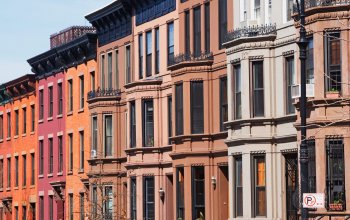
NYC’s best (and worst) architecture of 2019: Hudson Yards, TWA Hotel, and more
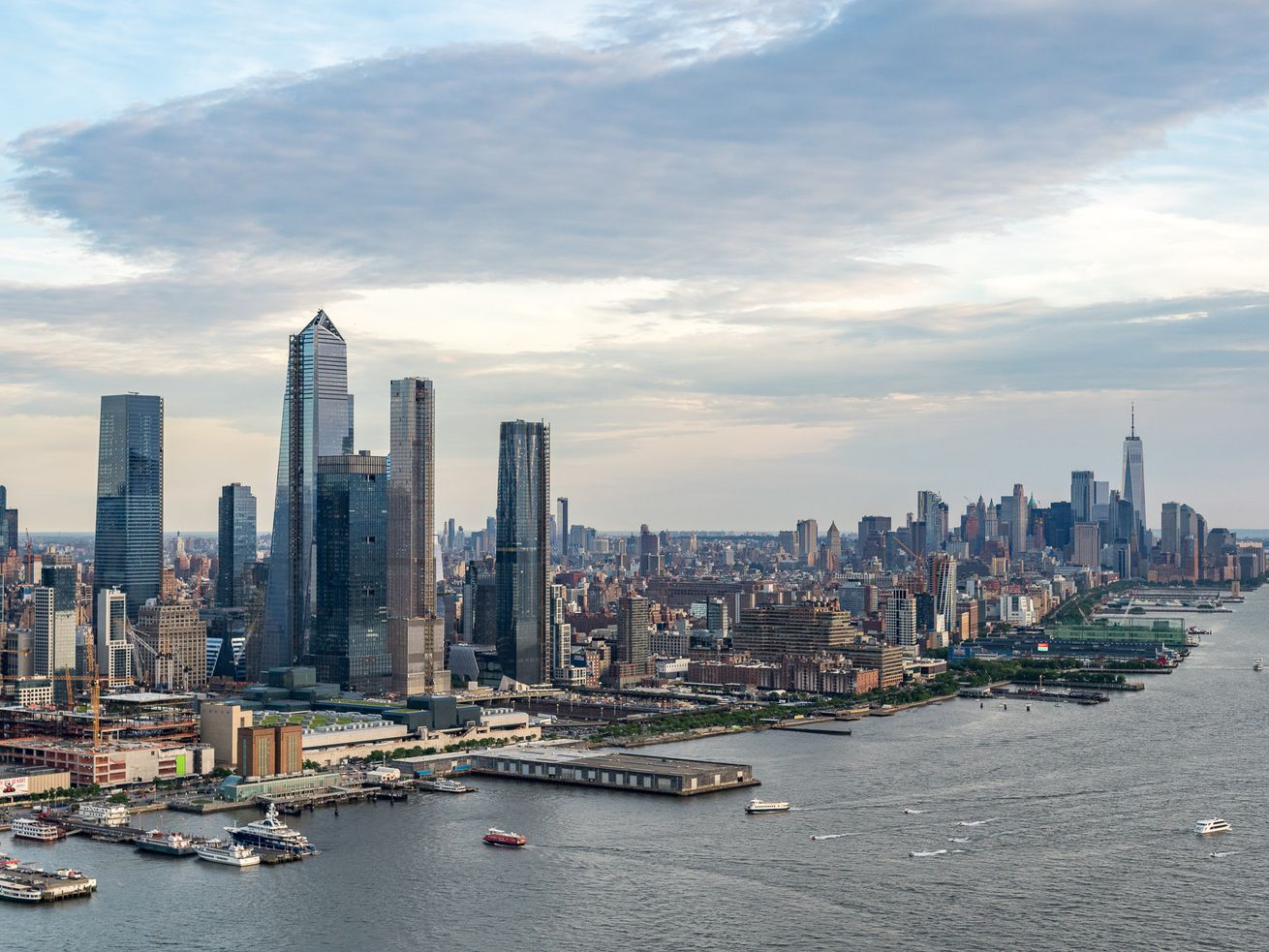
 Hudson Yards. | Max Touhey
Hudson Yards. | Max Touhey
The good, the bad, and the Vessel
After several ho-hum years in which it seemed like nothing all that interesting happened in the world of New York City architecture, 2019 was very busy: New buildings debuted, long-awaited renovations wrapped up, and an entire neighborhood materialized from nothing on Manhattan’s west side.
Was it a good year? There were certainly some triumphs. Brooklyn gained a massive new oasis in Shirley Chisholm Park, and the final section of the High Line opened just in time for the elevated park’s 10th anniversary. Eero Saarinen’s gorgeous TWA Terminal is once again open to the public, and looking better than ever. MoMA is back, and positively enormous. But there were misfires; you need only look at the gargantuan collection of skyscrapers at Hudson Yards, which has cemented its status as a playground for New York’s new Gilded Age, for proof.
Here now, the best (and some of the worst) of New York’s new architecture—reveals, makeovers, and parks included—of 2019.
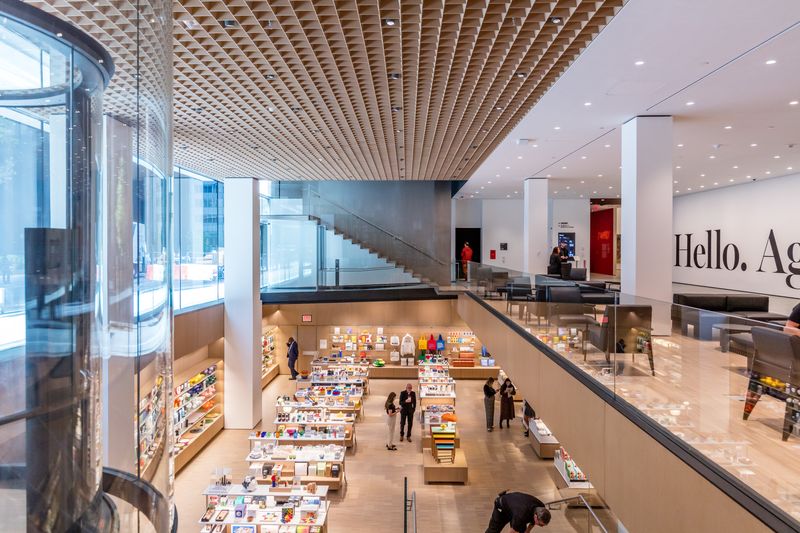 Max Touhey
Max TouheyBest renovation
For nearly a century (the institution turned 90 in 2019), the Museum of Modern Art has been tinkering with the spaces that it inhabits, and this fall, it unveiled its most ambitious revamp yet. The renovation of its 53rd Street building, overseen by Diller Scofidio + Renfro and Gensler, added more than 40,000 square feet of fresh galleries, and sought to knit together many disparate spaces—the new galleries, the pieces of the original 1939 building designed by Philip Goodwin and Edward Durell Stone, the lobby from Yoshio Taniguchi’s 2004 revamp, Philip Johnson’s sculpture garden—into a cohesive whole.
It is mostly successful, if slightly overwhelming; more of the museum’s collection than ever is now on view, and will rotate out every few months. Give yourself at least a few hours to see everything, or use Curbed architecture critic Alexandra Lange’s curated itineraries as your guide.
Best rendering-to-reality
Speaking of the new MoMA, the skyscraper adjacent to the museum, Jean Nouvel’s 53 West 53, has just about wrapped up, and it’s one of the rare supertall towers that actually looks as good as—if not better than—its initial renderings. The structure itself is a slender, pointy tower rising from a thicker base, and unlike some of its Billionaires’ Row brethren, there’s actual visual interest thanks to the building’s distinctive crisscross facade. It also manages not to overwhelm the museum building next door—not an easy feat for a nearly 1,000-foot tower.
Honorable mention: The park formerly known as Diller Island—now dubbed “Little Island,” which easily wins “goofiest name given to a development this year”—is taking shape at Pier 55 in Hudson River Park. We’re reserving final judgment until Thomas Heatherwick’s offshore park is complete, but watching its tulip-shaped concrete pods come together has certainly been interesting.
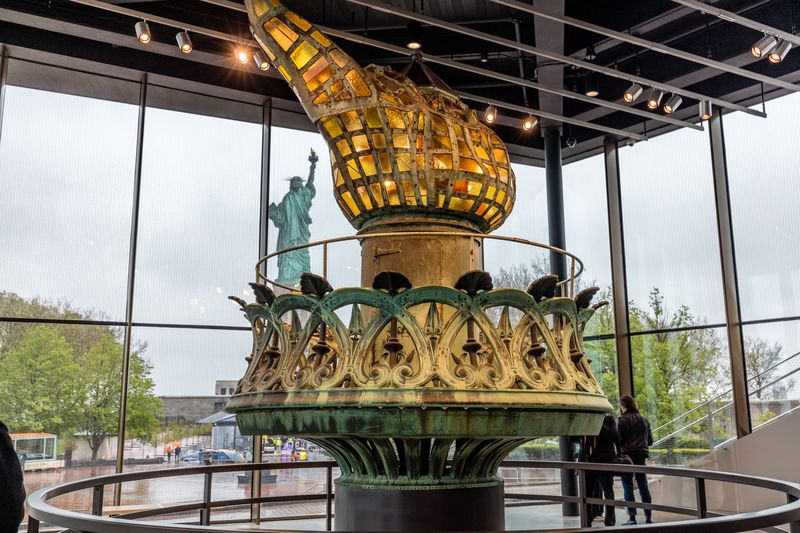 Max Touhey
Max TouheyBest reason(s) to visit a tourist trap
New Yorkers often wear their avoidance of crowded city landmarks—places like the Statue of Liberty or the Empire State Building—as a badge of honor, or proof that they are, in fact, real New Yorkers. But those hardened haters of tourist traps would do well to soften their stance, thanks to a new museum at the former and an unparalleled view of the city at the latter.
The Statue of Liberty Museum, which opened on Liberty Island in May, is a first for the national landmark: a dedicated space that explores the creation, history, and significance of the statue, with artifacts like the original, circa-1886 torch originally carried by Lady Liberty on display. The building, designed by FXCollaborative, also functions as a welcome respite on the island, with rooftop seating that provides a previously unseen view of the statue itself (it’s her backside, but still). It also won our readers’ choice for the best building of 2019.
In Midtown, meanwhile, the Empire State Building has completely overhauled the experience of visiting its observation decks, with new exhibits that dive into the history of the Art Deco stunner and its place as an architectural icon. But the real reason to visit is the new 102nd-floor observatory, located a terrifying 1,250 feet above the rest of Manhattan. Soak in the views from the floor-to-ceiling windows; even the most cynical, hardened New Yorker will be wowed by this cinematic vista of New York City.
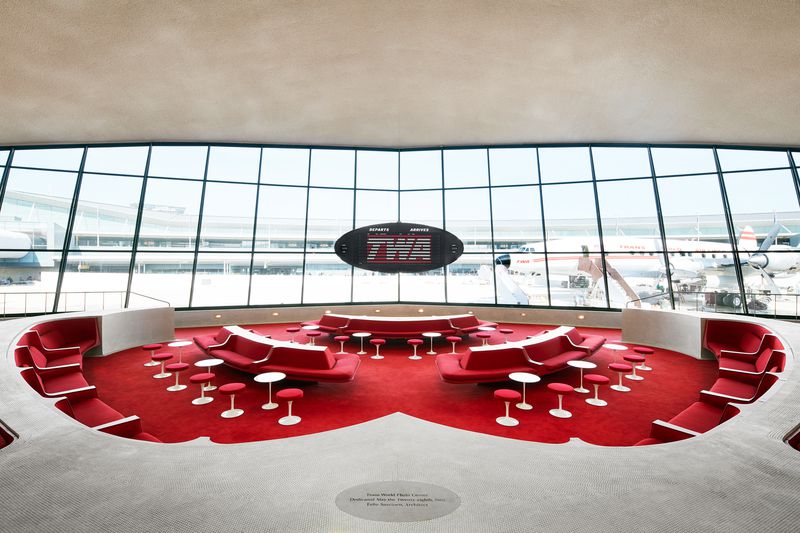 Courtesy of MCR/Morse Development
Courtesy of MCR/Morse DevelopmentBest reason to take a staycation
For a while, it seemed like Eero Saarinen’s stunning TWA Terminal was forever doomed to languish, unused and unloved, in a corner of JFK Airport. Aviation and architecture geeks alike bemoaned the fact that the Finnish architect’s innovative structure—a monument to the optimism of the Jet Age and midcentury style that became functionally obsolete almost as soon as it opened in 1962—was hidden from public view for nearly two decades.
But finally, after years of delayed and aborted attempts to bring a hotel to the space, the TWA Terminal was reborn as the TWA Hotel in May—and those clamoring for access to Saarinen’s masterpiece weren’t disappointed. Many of the building’s most iconic elements were well-preserved; the Sunken Lounge, with its rich red upholstery and Solari departures board, is now a cocktail bar, while the carpeted tunnels that connect the Saarinen building to the airport have become a prime selfie spot.
The 500-room hotel, situated behind the Saarinen building, is a perfectly fine place to spend a night—plus, you can select a room with a view of the terminal or the tarmac (you know which one we chose). But the terminal itself can be visited free of charge, and is well worth the trek to JFK.
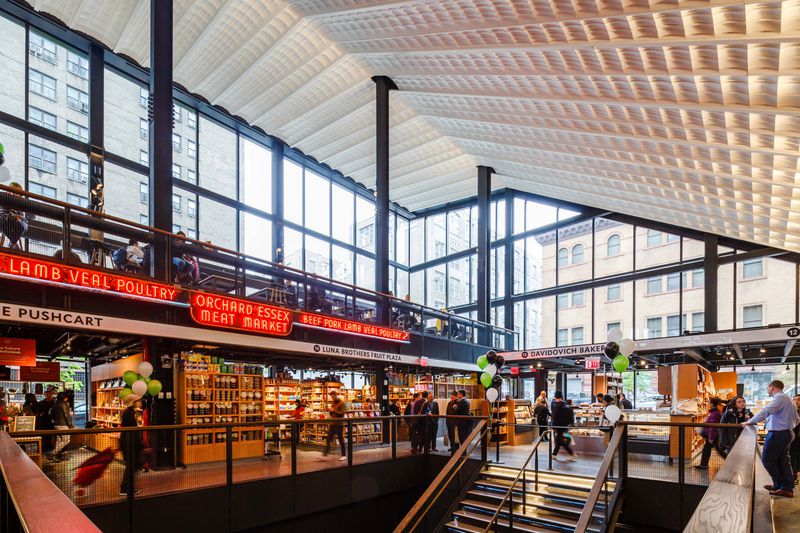 Alex Staniloff for Eater
Alex Staniloff for EaterBiggest trend
The suburban mall may be dying (or is it?), but its urban counterpart is thriving in New York City: This year, several new malls—excuse us, “vertical shopping experiences”—opened across the city, serving shoppers across all ends of the spectrum. Looking for ridiculously high-end goods and overpriced restaurants? Try the Shops & Restaurants at Hudson Yards, where luxury is the buzzword. Are you more budget-conscious? The city’s first outlet mall, Empire Outlets, opened on Staten Island in May (and happens to have a nicely designed public space surrounding it). Looking for more of a food hall thing? The Essex Crossing megaproject is now home to both a new outpost of the Essex Street Market and the Market Line, a fancier bazaar inspired by destinations like London’s Borough Market.
If there is a throughline to these new malls, it’s that they offer more than just stores for window shopping. “All malls aren’t dead—but the ones that are thriving are doing so because they are becoming more like the city,” Curbed’s architecture critic Alexandra Lange wrote earlier this year. “They offer a hybrid retail experience, now centered on food rather than fashion, born of the 21st century.”
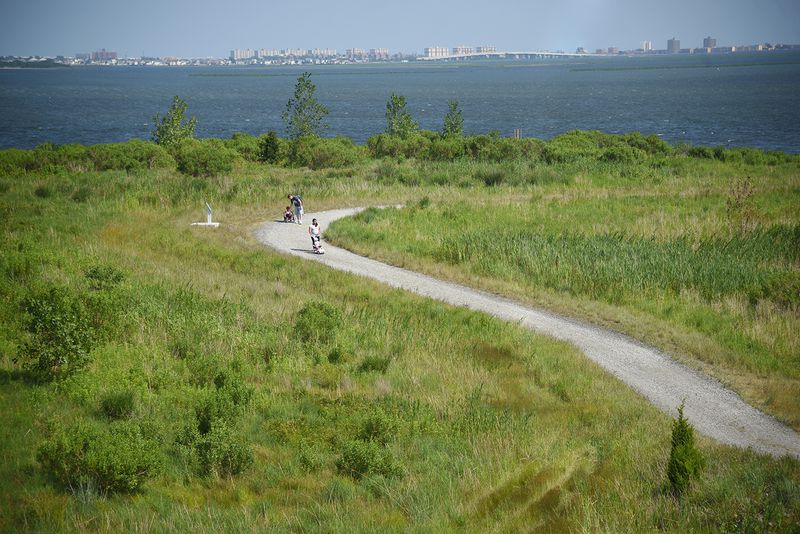 Nathan Kensinger
Nathan KensingerBest reason to get outside
The biggest park opening of the year happened in a remote corner of Brooklyn that was once home to a toxic waste dump. Shirley Chisholm State Park, which debuted over the summer, covers 407 acres near Jamaica Bay, and turned what used to be the Pennsylvania Avenue Landfill into a verdant oasis in a section of the city that’s starved for parkland.
“The words “charming” and “fun” don’t often come to mind when walking around New York City’s polluted landfills,” Curbed columnist Nathan Kensinger wrote after the park opened. “Yet somehow, a walk through this new park is just that—a surprisingly enjoyable ramble through a delightfully varied landscape of wildflower meadows, native grasslands, hidden beaches, and bustling fishing piers. Butterflies and songbirds fill the air, while cooling breezes waft in from Jamaica Bay.”
Honorable mentions: The final section of the High Line, the Spur, opened in June, bringing some much-needed space and seating to the perpetually packed linear park. And after many years and several false starts, SHoP’s “eco-park” at Pier 35 opened in April, with a landscaped lawn, a “mussel beach,” and most importantly, swings!
 Max Touhey
Max TouheyBiggest missed opportunity
The Hunters Point South branch of the Queens Public Library should have been a triumph. After two decades of delays and $41 million, the Steven Holl Architects-designed branch finally debuted on the Long Island City waterfront in October. The new building is a striking addition to the urban fabric: a square box covered in a subtly sparkly precast concrete, with swooping windows carved into the exterior. From the inside, those windows offer some of the most spectacular Manhattan skyline views you’ll find in the city.
But disability rights advocates quickly pointed out that some parts of the library (including a mezzanine just off the entrance, and a part of the children’s section) are inaccessible to those in wheelchairs or with other mobility issues. The building is technically compliant with the Americans with Disabilities Act, but as Justin Davidson wrote in New York, “meeting legal requirements is a false standard; even vertical buildings can and should always be designed so that they offer the same quality of experience to everyone.”
That’s especially true when so much time, money, and effort has been invested in a particular project—one that should’ve been a model of good civic design.
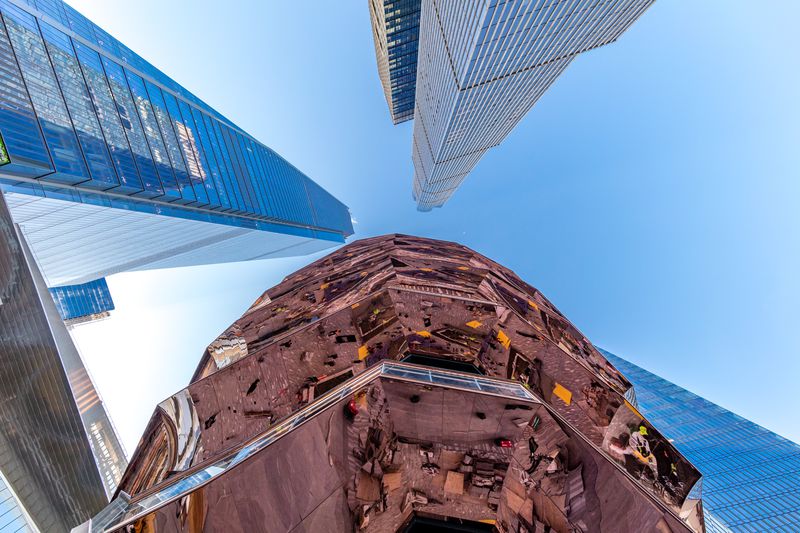 Max Touhey
Max TouheyBuilding(s) of the year
It’s impossible to talk about New York City architecture—or, really, New York City as a whole—in 2019 without talking about Hudson Yards. The decades-in-the-making megaproject opened its first phase this year, bringing with it several new buildings, a fancy mall, and one very shiny stairway to nowhere (or shawarma, or butt plug; the memes are endless, and very good) at its center.
Does this mean that the collection of skyscrapers that sprouted on Manhattan’s far west side—designed by a murderer’s row of big-name architects, both corporate (KPF, SOM) and cutting-edge (Diller, Scofidio, + Renfro)—is any good? We’ll let Curbed’s architecture critic, Alexandra Lange, field that one:
The problem of the design of Hudson Yards, the 28-acre, $25 billion development built on a platform over Penn Station’s working railroad tracks, is that there is no contrast. No weirdness, no wildness, nothing off book. The megaproject was built by an all-star team of designers, but in the end, it’s impossible to tell the difference between the corporate and the artistic.
Like the Oculus, which we crowned Building of the Year in 2016, Hudson Yards isn’t an architectural triumph; its skyscrapers are fine, and yes, they invite comparisons to sex toys. The $25 billion project is billed as an economic win for New York—think of all the new residents in those high-rise towers, shoppers plunking down thousands on luxury goods, and office drones commuting to and fro!—but the city also gave billions in handouts to wealthy developers and corporations to make that happen. And Related Companies honcho Stephen Ross, who will soon move to a penthouse atop 35 Hudson Yards (where apartments start at $5 million), compares the whole thing to “a city within a city” (a gated community, you might say) but insists that it’s “not a neighborhood for the rich.” Right.
Still, it’s hard to think of a more significant moment for New York’s built environment in 2019—or one more emblematic of the influence of late-stage capitalism on this city—than Hudson Yards. We’ll let Lange take it away again:
We always knew it would be like this, because this is what you get when you let a private developer make a neighborhood—there’s no room for weirdness. Even if you hire different architects, their work comes out the same. If you look at 15 and 35 Hudson Yards from the waist up, can you tell which one is designed by perennial frontrunners for the Pritzker Prize, and which by the architect of One World Trade Center?
It is an explicitly rich person’s neighborhood on the edge of an island that tilts ever forward into being 100 percent rich person’s neighborhood. You really don’t have to go there if you don’t work there and, as I joked last year on Twitter, the whole thing could detach and float down the Hudson and it wouldn’t change a thing in my life. Farewell, great ocean liner of lawyers, fine dining, and fancy gyms!
Love where you live


